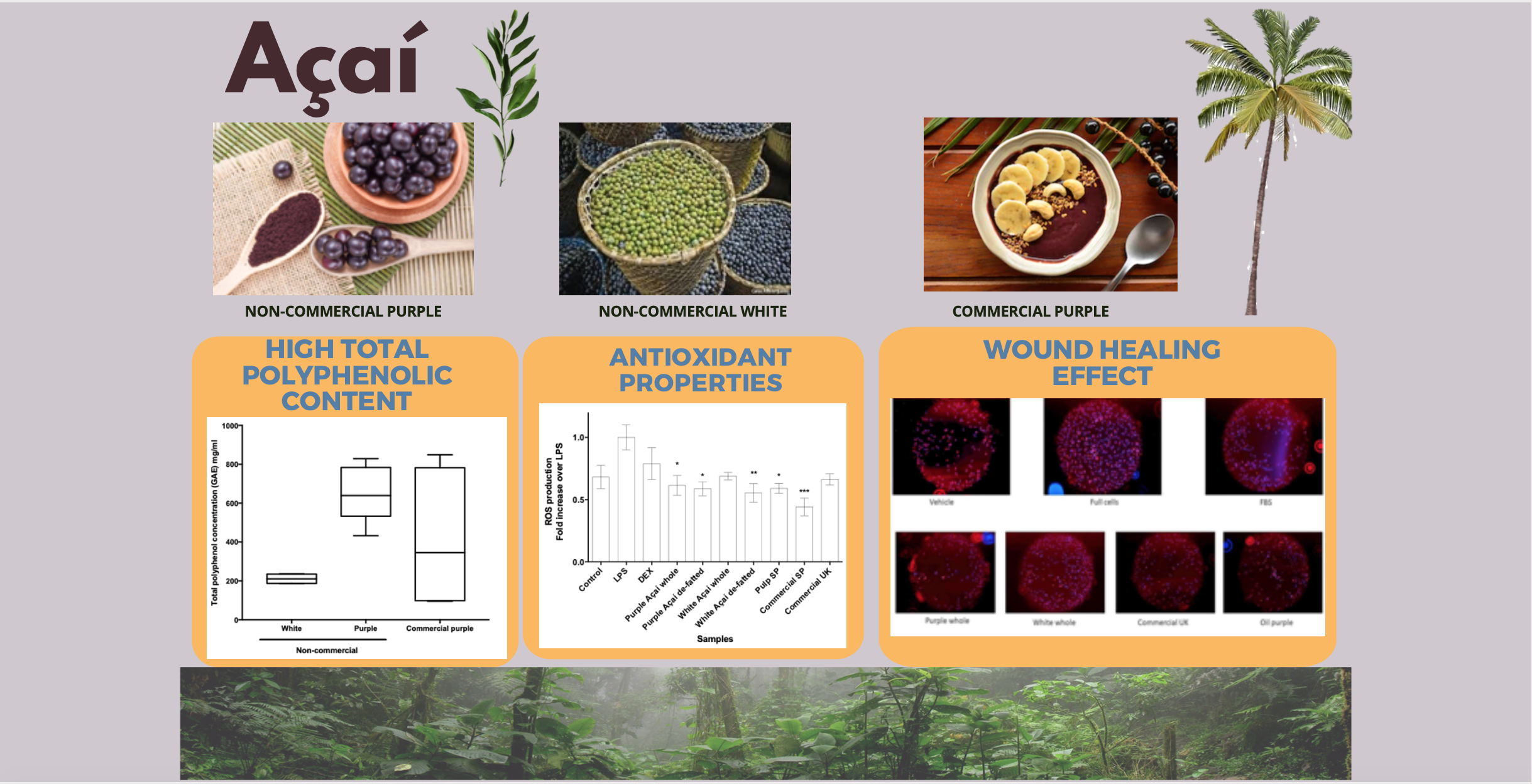Chemical composition analysis of açaí extracts revealed higher levels of total polyphenol content in purple açaí samples for both commercial (4.3 – 44.7 gallic acid equivalents mg/g) and non-commercial samples (30.2 – 42.0 mg/g) compared to white (8.2 – 11.9 mg/g) and oil samples (0.8 – 4.6 mg/g). The major anthocyanin compounds found in purple açaí samples were cyanidin-3-glucoside and cyanidin-3-rutinoside with total concentrations in the range of 3.6 – 14.3 cyanidin-3-glucoside equivalents mg/g. The oligomeric proanthocyanidins were quantified in the range of 1.5 – 6.1 procyanidin B1 equivalents mg/g. Moreover, açaí presented significant levels of calcium, magnesium, manganese, iron, zinc and copper, essential minor and trace elements, in comparison with other berries. All of the açaí extracts at 50 μg/mL potently inhibited the release of reactive oxygen species in lipopolysaccharide-stimulated RAW 264.7 macrophage cells, but none inhibited the release of nitric oxide. Furthermore, all the açaí samples demonstrated potential as wound healing agents due to the high levels of migration activity in human fibroblast cells.

